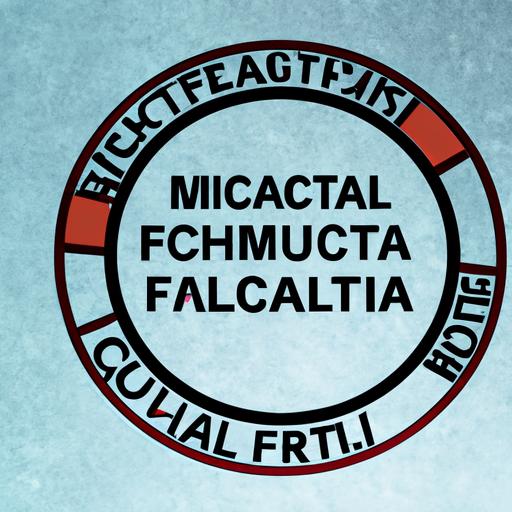Introduction
In the realm of cybersecurity, the Multi-Factor Authentication (MFA) requirement stands as a pivotal defense mechanism against unauthorized access to sensitive data. MFA is a sophisticated security protocol that mandates users to provide multiple forms of verification before granting access, ensuring an added layer of protection against potential breaches.
The significance of MFA in safeguarding sensitive information cannot be overstated. In today’s digital age, where cyber threats loom large, MFA serves as a robust barrier, thwarting malicious actors from infiltrating systems and compromising valuable data. By requiring users to verify their identity through multiple means, such as passwords, biometrics, or tokens, MFA fortifies cybersecurity defenses and bolsters organizational resilience against cyber attacks.
Understanding Claims in Tokens
Definition of Claims in Tokens
In the realm of cybersecurity, claims in tokens refer to the pieces of information encapsulated within a token that verify a user’s identity during the authentication process. These claims typically include details such as user roles, permissions, and attributes, serving as a digital representation of the user’s credentials.
How Claims are Used in Authentication Processes
Claims within tokens play a crucial role in authentication processes by providing essential information about the user that aids in verifying their identity. When a user attempts to access a system or application, these claims are examined to determine whether the user possesses the necessary authorization to proceed, thereby enhancing security and mitigating unauthorized access.
Role of Claims in Ensuring Secure Access
Claims in tokens serve as a fundamental component in ensuring secure access to sensitive data and resources. By encapsulating pertinent user information within tokens, organizations can establish a robust authentication framework that verifies identities accurately and efficiently. This mechanism not only enhances security measures but also bolsters user authentication processes, fostering a secure and seamless user experience.
MFA Requirement in Cybersecurity
Explanation of MFA Requirement
The MFA requirement in cybersecurity entails users providing multiple forms of authentication before gaining access to systems or data. This stringent protocol ensures that individuals go through additional verification steps beyond just entering a password, significantly enhancing security measures.
Benefits of Implementing MFA in Organizations
Implementing MFA in organizations offers a myriad of benefits, including heightened security, reduced risk of unauthorized access, and enhanced protection of sensitive information. By requiring users to provide multiple layers of authentication, organizations can significantly decrease the likelihood of data breaches and cyber attacks.
Common Methods of MFA Authentication
There are several common methods of MFA authentication employed by organizations, including knowledge-based factors (passwords or PINs), possession-based factors (smart cards or tokens), and inherence-based factors (biometrics). Each method offers unique advantages and challenges, catering to diverse security needs and preferences within the organization.
Satisfying MFA Requirement with Claims in Tokens
How Claims in Tokens Can Be Used to Satisfy MFA Requirement
In the realm of cybersecurity, claims in tokens play a crucial role in satisfying the Multi-Factor Authentication (MFA) requirement. Claims are pieces of information stored within tokens that provide essential details about the user, such as their identity, permissions, or attributes. By leveraging claims in tokens, organizations can enhance the security of their MFA processes by ensuring that only authorized users with valid claims can access sensitive data.
Examples of How Claims Can Enhance Security in MFA Processes
To illustrate the effectiveness of claims in tokens for MFA authentication, consider a scenario where a user attempts to access a secure system. By presenting a token containing specific claims, such as a valid user ID and biometric data, the user can successfully authenticate their identity and gain access to the system. This exemplifies how claims in tokens serve as a powerful tool for enhancing security in MFA processes and safeguarding sensitive information.
Best Practices for Utilizing Claims in Tokens for MFA Authentication
To optimize the utilization of claims in tokens for MFA authentication, organizations should adhere to best practices that promote security and efficiency. Implementing robust token management systems, encrypting claims to prevent unauthorized access, and regularly updating claims to reflect user permissions are essential steps towards ensuring a secure MFA environment. By following these best practices, organizations can effectively leverage claims in tokens to meet the MFA requirement and fortify their cybersecurity defenses.
Conclusion
Token-based authentication plays a crucial role in meeting the Multi-Factor Authentication (MFA) requirement, offering a secure and efficient method of verifying user identity. By utilizing tokens as a means of authentication, organizations can enhance their security posture and ensure compliance with MFA standards.
In conclusion, the integration of claims in tokens provides a robust solution for satisfying the MFA requirement. Leveraging the power of tokens to verify user identity through various means enhances security measures and strengthens defenses against cyber threats. As organizations continue to prioritize cybersecurity, incorporating token-based authentication with claims proves to be a valuable strategy in safeguarding sensitive data and mitigating risks in today’s evolving digital landscape.
